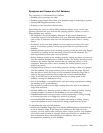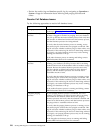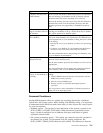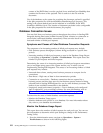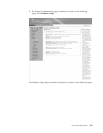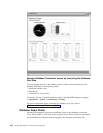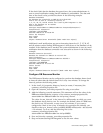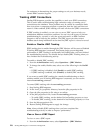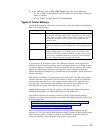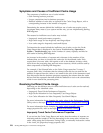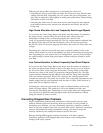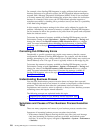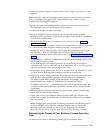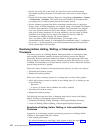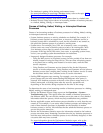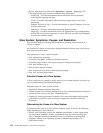
2. In the View box, next to View JDBC Report, click one of the following:
v To view a JDBC Tracking Report, click the View icon. Click F5 to refresh the
report, as needed.
v To save a JDBC Tracking Report, click (Download).
Types of Cache Memory
Sterling B2B Integrator utilizes the memory cache types described in the following
table to execute processes:
Memory Types Description
Soft reference cache When objects are removed from the memory cache in order to keep
the memory cache size constant, they are moved to a soft reference
cache, which can grow or shrink based on the available memory. If
the JVM has to reclaim memory space, it takes it from the soft
reference cache.
Memory cache Uses the amount of memory necessary to hold the objects in
memory at all times. You can configure this in the noapp.properties
file.
Disk cache Objects can be read more quickly from the disk than from the
database. When objects are no longer in the soft reference cache
because they have been garbage collected, the disk cache provides
a faster access mechanism than object retrieval from the database.
You can configure this in the noapp.properties file.
A soft cache is an in-memory cache. The difference between a soft cache and a
traditional cache is that the memory used to cache the objects is reclaimed as soon
as memory becomes constrained. When the system is low on memory, the cached
objects are automatically removed from memory. This is possible because the
objects themselves are backed by persistent data in the database or disk and can be
reread from there.
This behavior is similar to an operating system disk cache. The disk cache retains
recently read files or sections of files in memory in order to speed up subsequent
access to that data. However, if the system requires memory for applications to
run, the cache size is reduced proportionally. You can see this in Windows by
watching the size of the disk cache fall when you open a large file.
Sterling B2B Integrator follows this practice with soft caches. Most soft caches in
Sterling B2B Integrator are implemented by Java Soft References.
JVM short-lived min/max memory values are used for generational garbage
collection. For more information about generational garbage collection, refer to the
following Web sites:
v http://publib.boulder.ibm.com/infocenter/javasdk/v5r0/index.jsp?topic=/
com.ibm.java.doc.diagnostics.50/html/mm_gc_generational.html
v http://java.sun.com/docs/hotspot/gc1.4.2/faq.html
Based on the amount of memory allocated to Sterling B2B Integrator and the
number of CPUs, the Sterling B2B Integrator tuning wizard will allocate disk cache
and in-memory cache. In-memory cache is a combination of the soft reference
cache and memory cache displayed on the cache usage screen.
Performance Management 227



